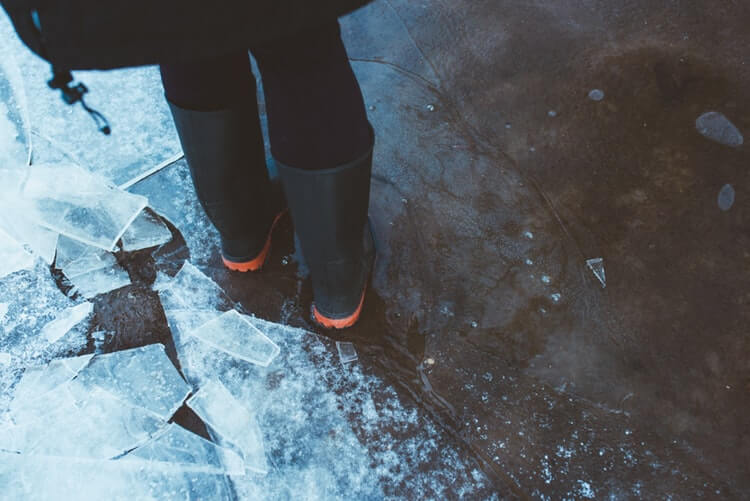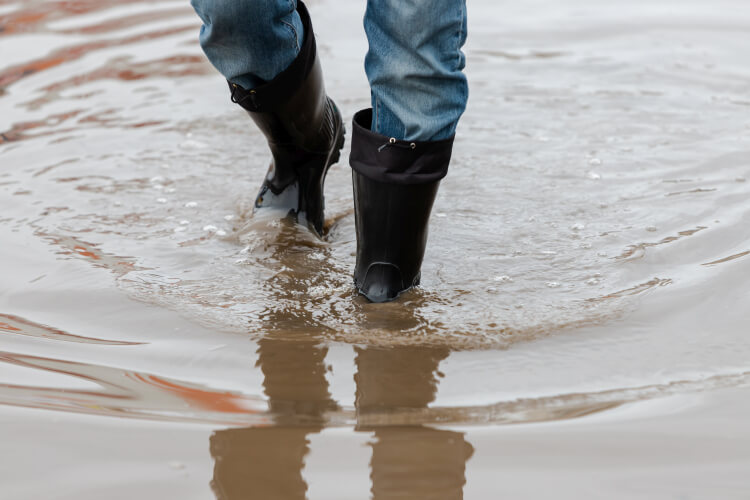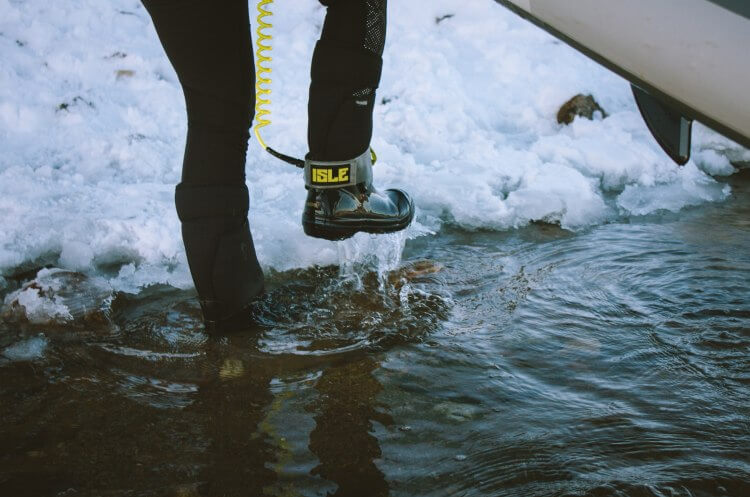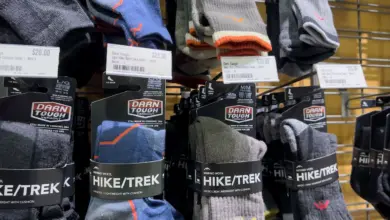Whether you are playing in the snow, walking in the woods, or walking around town, having a good boot is essential for keeping your feet warm and dry. But are all winter boots waterproof? Let’s take a look.
Are winter boots waterproof? Many winter boots are considered waterproof, but not all are. While waterproof standards vary from boot to boot, only rubber boots are truly waterproof. Some winter boots are described as “weatherproof” which means water resistant but not waterproof.
How Waterproof Is Waterproof?

If you have winter boots that were advertised as “waterproof”, your socks and feet may still get wet. So what’s going on here? False advertising? Faulty boots? Something else?
Well, to understand why some waterproof boots aren’t always waterproof, we have to look at what “waterproof” means when it comes to claims made by manufacturers.
When most manufacturers claim that their boots are waterproof, they are describing “waterproof” as a sliding scale. How waterproof something is will depend on the amount of water, pressure, and duration of water exposure. In theory, with enough pressure and exposure, all boots will eventually become wet.
Normally, when it comes to fabrics, waterproof ratings exist to determine how waterproof a piece of clothing is. When you are looking at a rain jacket, you will be able to tell how waterproof it is by looking at its rating. Some ratings are low, meaning not very waterproof, while other fabrics have a high rating, meaning extremely waterproof.
Boots, however, don’t seem to have such ratings. A technical consultant at Gore-Tex, Jonathan Swegle, says, “there are no agreed upon footwear industry standards for water-repellent, water-resistant, or waterproof footwear.”
Rubber Boots Are the Only Truly Waterproof Boot

The exception to this is rubber boots. Rubber boots, with the right construction, are the only true boot that is 100% waterproof. I wear a pair very similar to these high rubber boots that I slip on and off when I’m shoveling my driveway. My boots aren’t insulated so they are comfortable in the summer when it’s muddy, but can also be made warmer with socks in the winter.
If you’re looking for a waterproof winter rubber boot, you’ll want some insulation. Muck boots (find a pair at Amazon) will be a good choice, though they might not be the best choice for long hikes.
The problem rubber boots, however, is while they keep water and moisture out, they also keep water and moisture in. Over time, perspiration from your body will get trapped in the boot and make your feet wet from the inside. The remedy, in this case, is to change your socks often and let your feet dry out.
You may also like Can You Hike in Snow Boots?
How to Pick the Best Waterproof Winter Boots

If you’re just looking for something to walk around town with or play in the snow for a few hours, you don’t need to best boots on the market. But if you’re working for long hours outdoors, walking through slush every day, or hunting or ice fishing frequently, you’re going to want quality boots.
And yes, when it comes to boots, you get what you pay for. Cheaper boots are made from less durable rubber and poor stitching that will start to fall apart with frequent use. Stick with reputable companies like Merrill, L.L Bean, Redwing, and many other great boot brands. Some brands like L.L. Bean even come with a lifetime warranty.
Your best bet then at determining how waterproof a winter boot is, is to look at the construction, reviews, and brand of the boot. Cheaply made boots that claim to be waterproof aren’t going to hold up as well as more expensive boots from reputable companies.
Here are a few kinds of winter boots to take a look at:
- Muck boots – I call these my “get sh-t done boots”. Lots of farmers and hunters wear these kinds of boots because they are waterproof and high rise. The higher boot will protect your legs from splashes and some even come with drawcords to close the opening around your legs. See the Amazon Price.
- Pack boots – Pack boots are made from rubber roles and leather uppers. These often come with a lot of insulation and are more fashionable. See men’s and women’s boot prices at Amazon.
- Leather boots – Leather boots are also an option and can last a long time with proper care. Taking care of your leather boots and making sure they are waterproof may require extra maintenance.
Caring for Your Winter Boots
Proper maintenance and care for your winter boots will make them last a lot longer. Here are a few tips on how to keep your winter boots waterproof.
- Regularly cleaning the boot to remove any salt stains or dirt. If you have non-leather boots, you can use some soap and water and gently brush with an old toothbrush.
- Apply a waterproof coating to the boot (Mink oil is especially great for leather).
- Some people suggest buying two pairs and rotating them, allowing the wet pair to dry out slowly. This is only necessary if your feet boots wet a lot.
You may also like Can You Hike in Running Shoes?
Tips for Keeping Your Feet Dry
When it comes to keeping your feet dry, it usually comes down to 3 components:
- Having proper footwear
- Avoiding wet areas if possible
- Removing wet items
Proper footwear
Having the proper footwear just doesn’t mean wearing a quality waterproof winter boot, though that will certainly help. Other aspects to consider are socks (see my article on why you should wear two socks), gaiters, and snowshoes when appropriate.
Socks will help absorb moisture both from the elements and from your own perspiration. Thick wool socks are going to be your friend. They are some of the warmest and most comfy. You can get Merino socks pretty affordable now if you shop around. One of the best places to shop for Merino socks is at Amazon.
Gaitors are especially helpful to prevent snow and rain from falling into your boot. Most gaiters on the market will fit any boot. I like to wear these with my normal hiking pants to add some extra protection. If you don’t have gaiters, then snow or rain pants over your shoes are a good substitute to keep out the snow and rain.
Avoid Wet Areas
Okay, this one is obvious, but it’s still a good reminder. Many times we think our winter boots are fully waterproof so we happily walk through snow and slush thinking our boots will be fine. If you don’t have a solid waterproof boot, it’s best to avoid these wet areas if you can.
Removing Wet Items
If you think there might be a chance of getting wet, it’s always good to bring a backup pair of socks (or two!) stored in a ziplock bag. You might even want to bring an extra pair of pants. After a long day of being outside in the cold, the last thing you want to do is stay in your wet clothes. Always bring backup clothes for such occasions.
You may also like Are Timberlands Good for Hiking? (It Depends)
Conclusion
Not all winter boots are waterproof. It really comes down to the materials and construction of the boot. Some winter boots are water-resistant, while full rubber boots are truly waterproof. Taking proper care of your boots, staying out areas, and wearing gators or water-resistant pants will all help to keep your feet dry. And remember, always carry extra socks as a backup.



